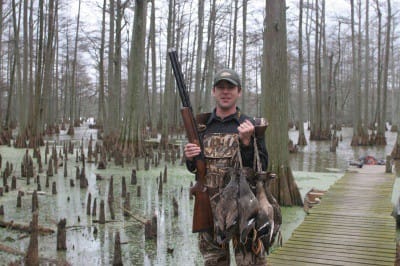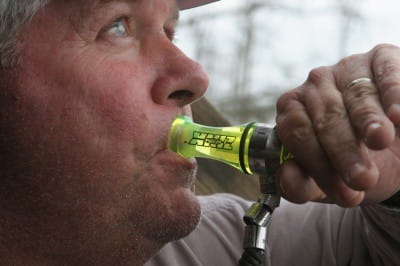
Want to kill more ducks? Of course you do. It’s really pretty simple, at least it should be, and experts agree that a handful of common mistakes can be fixed with a few adjustments, a couple of slight changes and a new outlook on your own duck hunting efforts. Here’s a look at some common blunders.
Sit Still – The urge to look skyward and follow the birds as they circle the blind is a powerful one. Don’t. Instead, focus on what’s going on in front of the blind. That’s where all the action takes place, says veteran waterfowler Mark Hoke.
“We all want to track the birds and know exactly where they are, but that’s a good way to flare them,” says Hoke, an Avery Outdoors pro-staff member. “They will see the sun shine of your face and they’ll see the movement, so I always just sit real still and let the birds drop into the decoys.”
If you have to look, Hoke recommends following the birds with your eyes and turning your head as little as possible.
Blend Better – Pressured ducks have seen it all, so nothing matters more than going unseen. The best way to do that is with the right camouflage pattern, one that blends in with the natural surroundings. That means buying patterns designed specifically for waterfowl hunting. There is everything from cattails, marsh grass and corn, giving waterfowl hunters the ability to disappear in any hunting situation. Most woodland camouflage, designed primarily for deer hunters sitting in pines or oaks, is far too dark for a typical duck blind.
Of course, hunters who rely on layout blinds don’t need to worry about what they wear-a black sweatshirt does just fine-but they do need to worry about hiding the blind itself. Hoke typically relies on natural vegetation to brush up his layouts and permanent blinds.
Call Less – Put a duck call in the hands of just about every duck hunter and you’ll hear a running symphony of quacks, hails and chuckles. It’s almost like a disease as hunters simply can’t stop tooting on their calls long enough to let the ducks work.

“Overcalling can spook ducks a lot faster than under-calling,” says Hoke. “I’ve killed a lot of birds when I never even blew on my call.”
Hoke says the best way to understand duck language is to hear lots of ducks. Spend a day at a national wildlife refuge and listen carefully to the birds as they fly and as they sit. They just don’t call nearly as much as the average duck hunter thinks they do. Hoke will call to get the attention of passing ducks, or he’ll use a come-back if the birds don’t swing.
Shoot Better – Sounds obvious, of course, but someone determined the average dove hunter hits one out of five birds he shoots at. That’s pretty sad. It’s probably about the same, maybe even a bit worse, for duck hunters. The answer? Practice. The best place to duplicate a duck hunt is on a sporting clays range because the “birds” come from a variety of angles and speeds.
Perhaps the primary reason so many shots are fired is that many hunters don’t know the effective distance of their shotgun. Or they simply refuse to hold off on marginal shot opportunities, blasting away at any bird that flies within 70 or 80 yards of the blind. Skybusting not only results in crippled and lost birds, it perpetuates a negative image of hunters. Pattern your gun at 30, 40 and 50 yards to see exactly what it’s doing. Also, practice estimating distances of flying birds.
Go More – It’s amazing how many hunters who complain about their lack of success really don’t go all that much. The most successful hunters live for waterfowl season. They schedule their vacations around it and sweet-talk their wives, bosses and teachers into letting them squeeze a few extra hours in the marsh every chance they get. When they aren’t actually watching over a decoy spread, they are scouting the next hotspot, studying ducks and learning duck behavior. As a result, they kill more birds.



